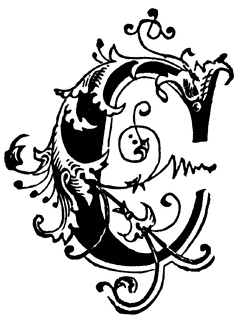 A few years ago, I received a copy of an article that transcribed a letter written by Frank E Leaphart, my 3rd Great-Grandfather and a Civil War soldier. It was unclear where the article was published - a book, a magazine? - or where the original letter was stored - an archive, by an individual? - or if there was any information in the publication aside from the letter. I've been trying to find the origins of the letter ever since receiving it.
A few years ago, I received a copy of an article that transcribed a letter written by Frank E Leaphart, my 3rd Great-Grandfather and a Civil War soldier. It was unclear where the article was published - a book, a magazine? - or where the original letter was stored - an archive, by an individual? - or if there was any information in the publication aside from the letter. I've been trying to find the origins of the letter ever since receiving it.I recently picked up the July/August issue of Family Tree Magazine which included the article "Better Together." It explains the collaboration between FindMyPast.com and the Periodical Source Index (PERSI). Before reading this article, I had heard of both of these, but hadn't used either. But I was intrigued by the idea of PERSI, which is an index of genealogical magazines and journals, many of which have been digitized. So I went to search.findmypast.com/search/periodical-source-index and did a surname search for "Leaphart," which turned up five results (I started with Leaphart because it's a local variation of Liebhardt and if I find it, I know it's my family). To my absolute surprise, one of those results was "F. E. Leaphart Civil War letter to wife Julie, 1863." My letter!
When I clicked on the article, I was met with a payment wall. Do I pay? First off, my article has not been digitized. Secondly, on the search page, I am given the name of the article, the periodical title and the publication year. This is enough to find the article, but not enough to do so easily. I could contact the periodical personally and request back issues or assistance looking up the article - but how often do they publish? Monthly? Quarterly? That's potentially a lot of issues to purchase. They might not even be in business anymore. So I went ahead and purchased a single month subscription to FindMyPast.com in order to access the full results.
As I said, particular article was not digitized, but that's ok. Now that I'm past the pay wall, I have information on the exact volume that the article is published in. I can use his information to fill out a form (pdf) to request up to six articles at a time for a fee of $7.50, plus 20¢ per page. And I very quickly found six articles to request - this is a treasure trove! I'll be waiting excited for the articles that I requested and will probably find a more to request in the mean time.
















 WWII means that women wouldn't have entered the workforce to make up for the men going overseas, or taken certain positions in the army. Women like my Great-Aunt Ollie wouldn't have gone to California to build airplanes and fill other jobs around the country. Without this experience, the women's liberation movement would be delayed and we could today remain in a society where women, especially in the middle and upper classes, are expected to be homemakers.
WWII means that women wouldn't have entered the workforce to make up for the men going overseas, or taken certain positions in the army. Women like my Great-Aunt Ollie wouldn't have gone to California to build airplanes and fill other jobs around the country. Without this experience, the women's liberation movement would be delayed and we could today remain in a society where women, especially in the middle and upper classes, are expected to be homemakers. 














 Yesterday, I attended my first ever DAR meeting. If you remember from previous posts, I first met with the local DAR chapter's Registrar in December. Between then and now they had a meeting (while I was on vacation in Colonial Williamsburg), in which I was voted in as a prospective member.
Yesterday, I attended my first ever DAR meeting. If you remember from previous posts, I first met with the local DAR chapter's Registrar in December. Between then and now they had a meeting (while I was on vacation in Colonial Williamsburg), in which I was voted in as a prospective member.





